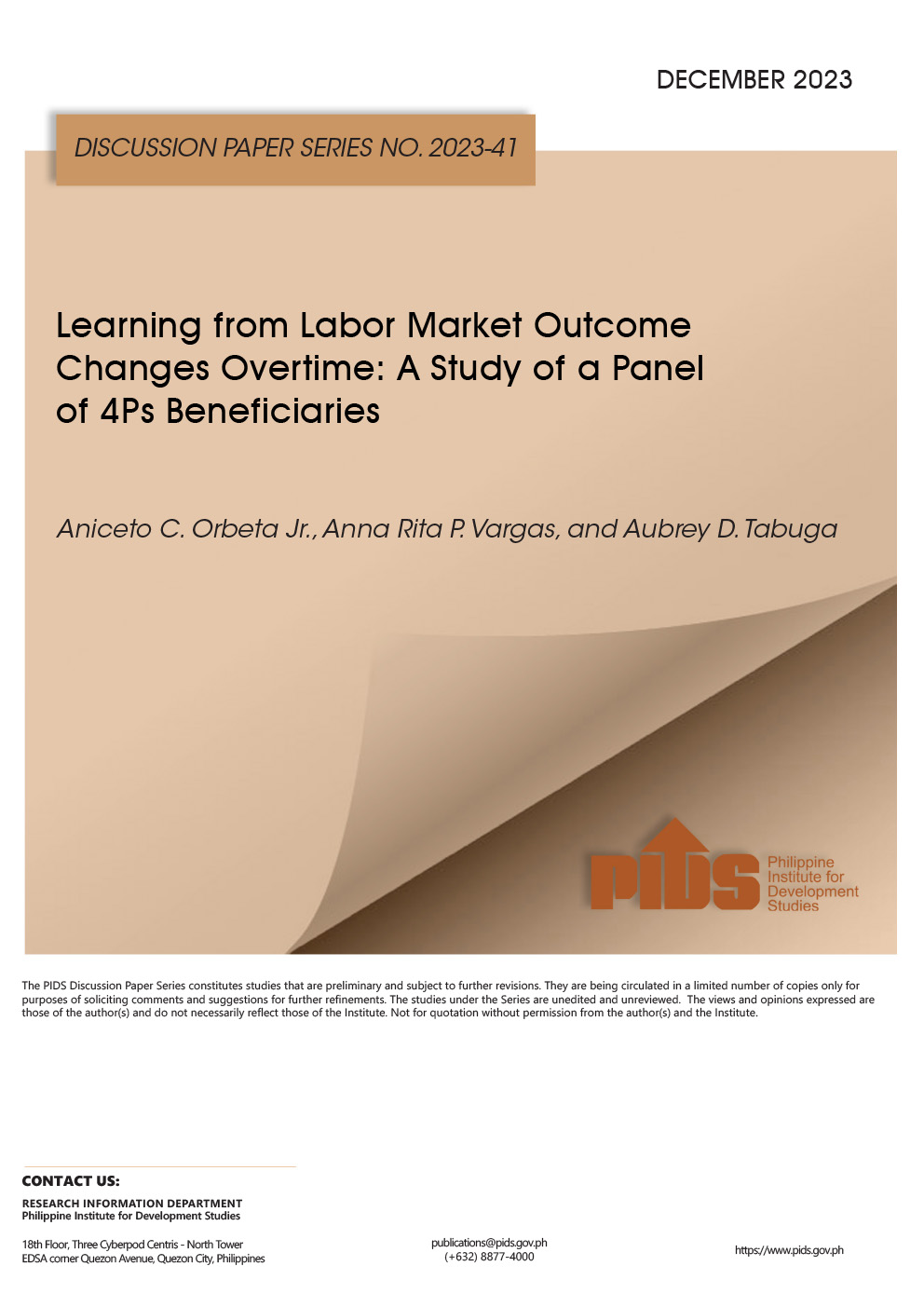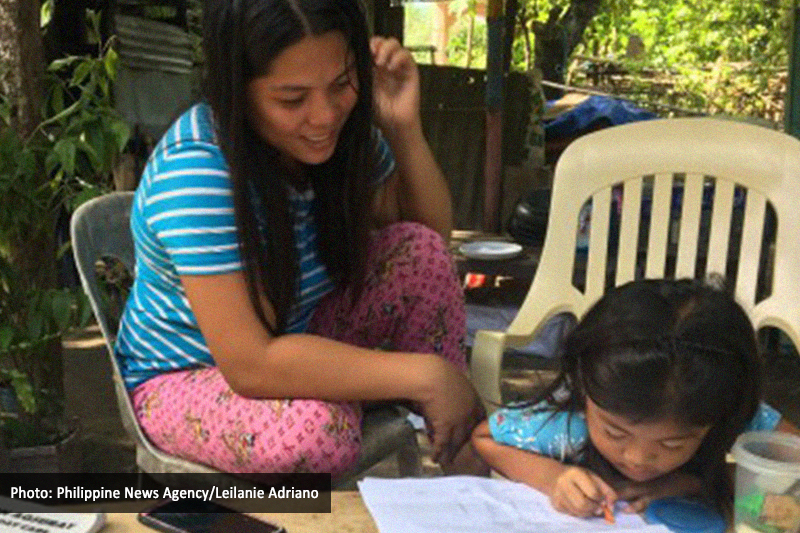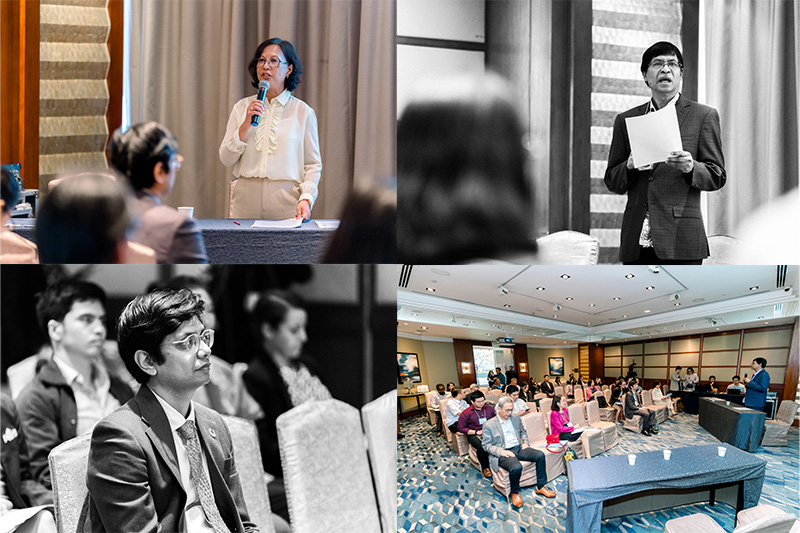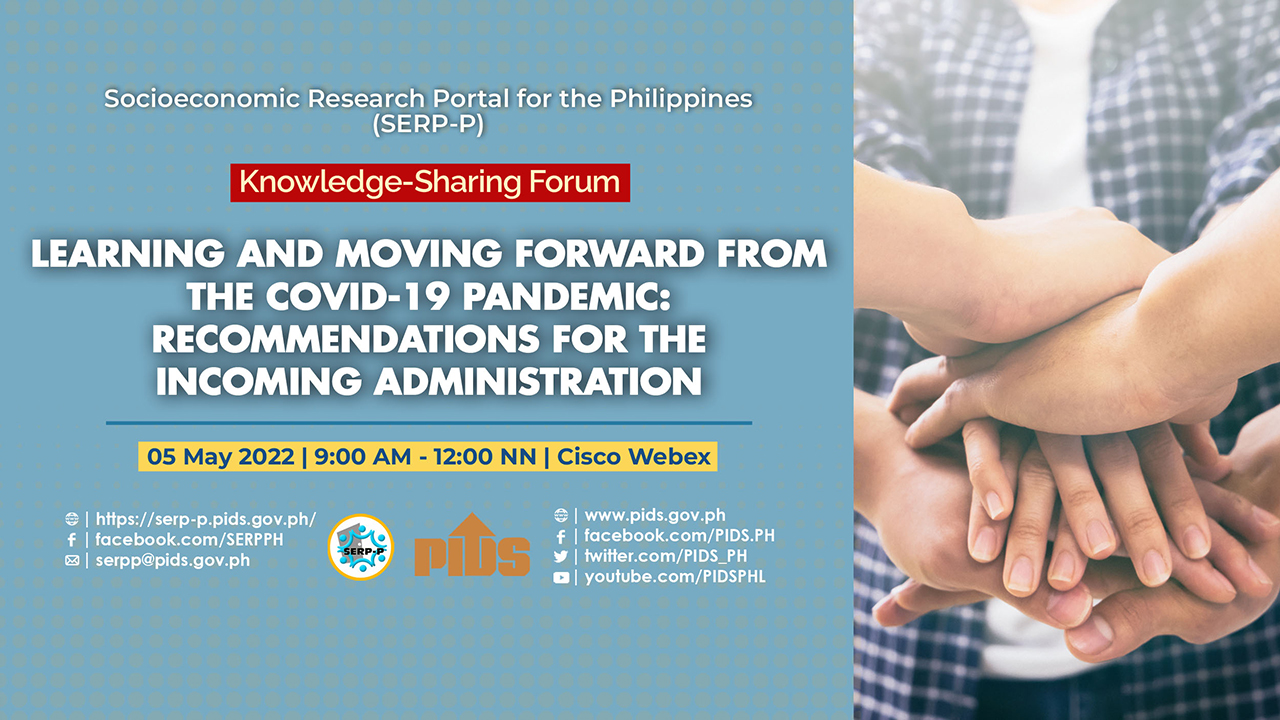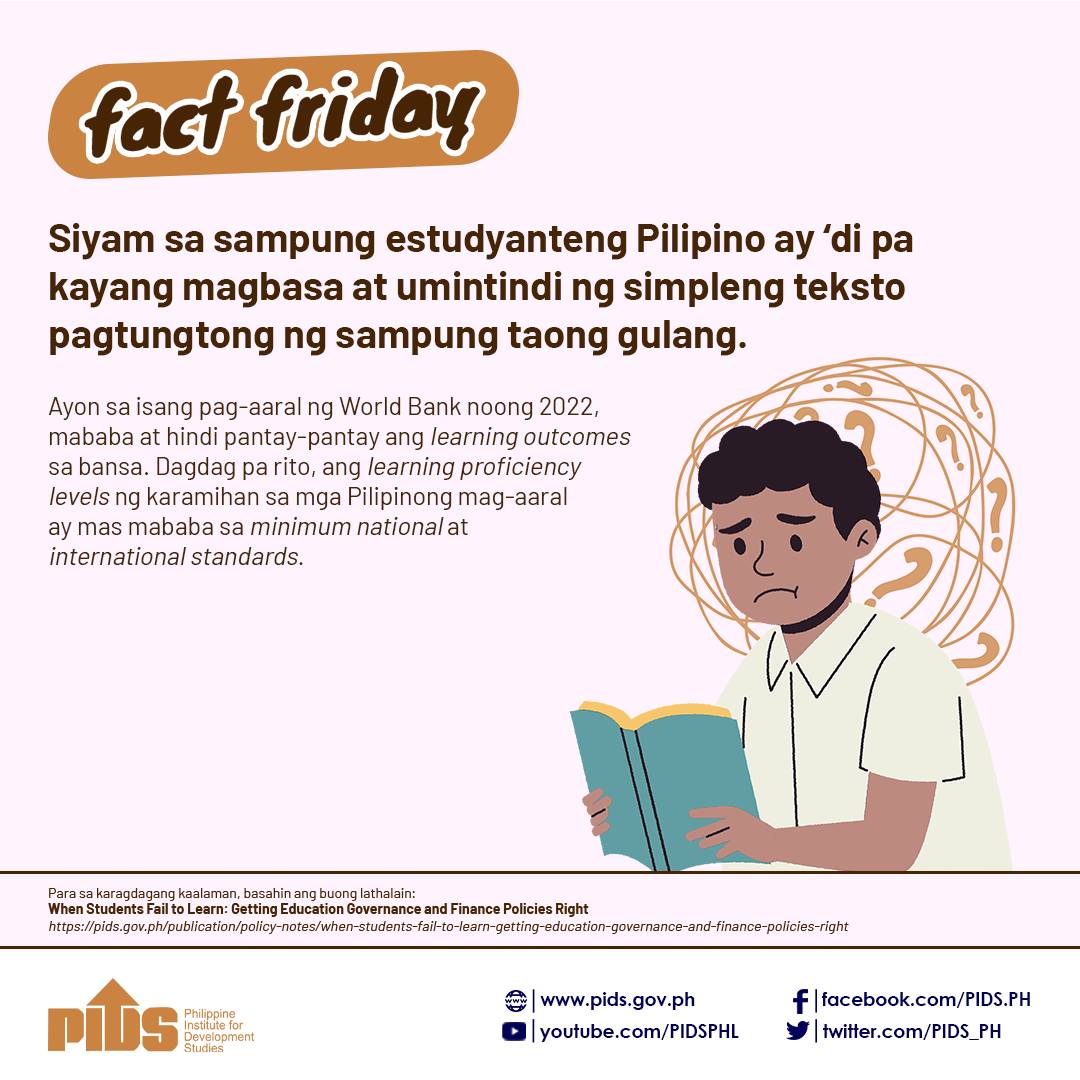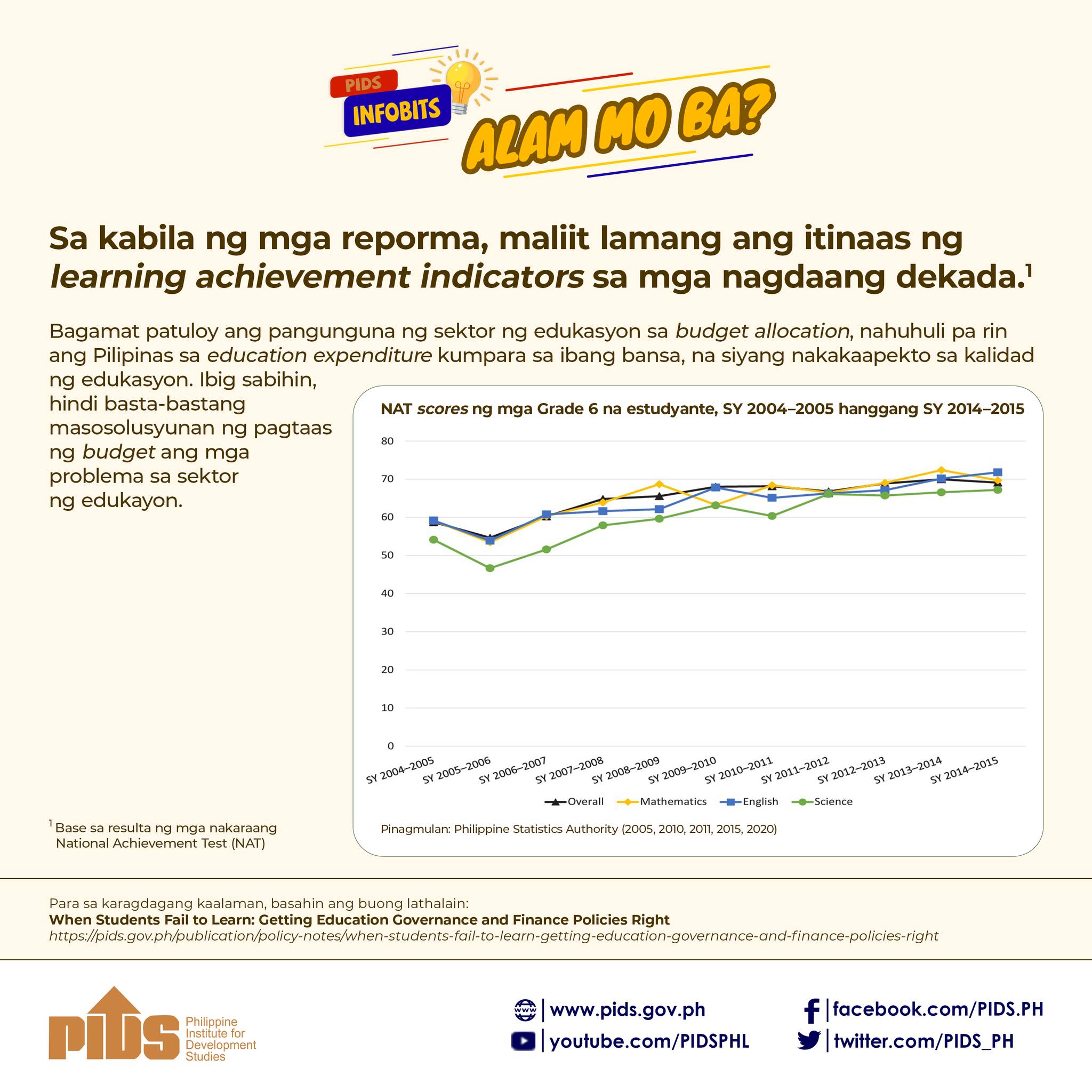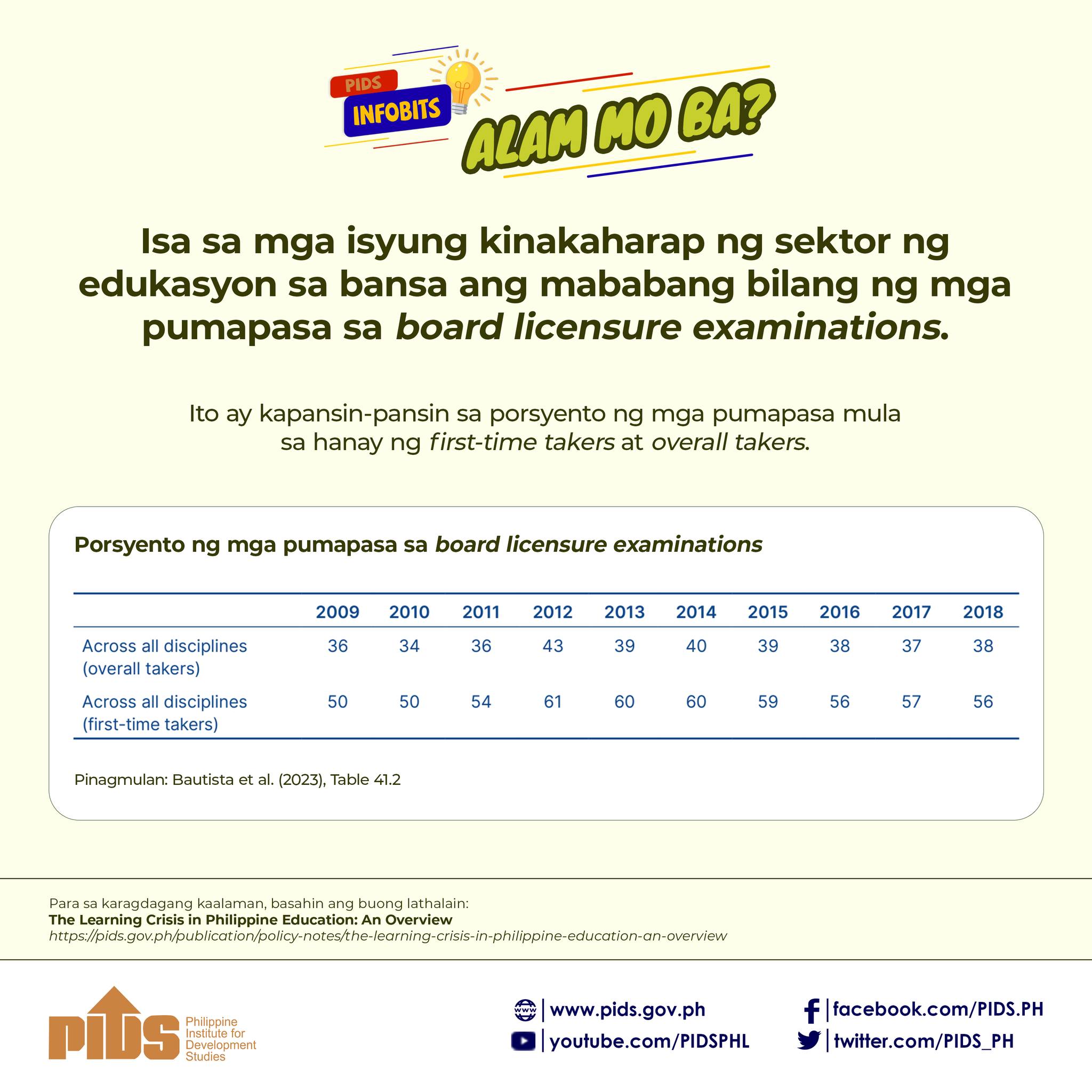MANILA, Philippines – It’s an impossible task from afar.
This is how teacher Jane* described how she would execute a distance learning approach for her students with special needs beginning August 24.
"Imagine, how can you teach students with special needs to bake from afar? Paano mo tuturo kung ano ime-measure. Tapos magwawala sila dahil ayaw nila na ‘yung nanay nila ang magtuturo. Baka sirain pa ang laptop or what kapag hindi nila nagustuhan ‘yung pagtuturo ng nanay nila. Hindi ko talaga alam kung paano ang distance learning na ito para sa mga batang may kapansanan," Jane said.
(Imagine, how can you teach students with special needs to bake from afar. How do you teach them what to measure? Then they will throw tantrums because they don’t like how their mothers deliver the lessons. Worse, they will destroy their laptops. I really don’t know how distance learning will work for students with disabilities.)
Jane, who has been doing special education for 4 years now in a public school in Las Piñas, said that teaching students with special needs is very different from teaching regular students. It requires special attention and special education (SPED) teachers are the only ones trained to do that, she added.
"This will largely contribute sa regression ng students ko. Very much worried ako kasi yung progress namin the past 3 years kapag matagal mo siyang nabitawan mahirap na mag-grip ulit," Jane said.
Despite calls for delaying classes, Department of Education (DepEd) Secretary Leonor Briones said that their preparation for distance learning approach is "underway" so classes can start on August 24. (READ: Teachers' group wants class opening delayed to January 2021)
The decision to open schools in the middle of the health crisis has been met with criticism.
Parents and students pointed out that the lockdown affected household finances. Many Filipinos don't even have access to a computer or the internet.
The DepEd maintained that the lack of access to technology should not be a problem as schools will be providing printed modules for students.
But just like many parents, President Rodrigo Duterte himself is doubtful the country is ready for the distance learning approach.
The President expressed doubts about the country's ability to implement Briones' idea.
"We are talking of students here, it's millions. Mayroon ba siya? (Does she have?) But if she has or if we can afford it, we'll buy it and she can proceed with her novel idea of how the children can continue with their education," Duterte said in a televised briefing on June 5.
‘Individualized’ approach needed
Unlike teaching regular students, learners with disabilities require SPED teachers to be hands-on in their learning process.
But this posed a bigger problem to the distance learning approach when most SPED teachers in public schools handle a class of students with different disabilities.
"Sa public school kasi parang wala maysadong sistema. Halo-halo ang mga bata. Sa klase ko mayroon akong estudyante na may hearing impairment, may autism, at mayroong intellectual disability,"Jane said.
(In public schools, there is no system in place. The students are mixed. I have students with hearing impairment, autism, and intellectual disability in one class.)
"Imagine implementing distance learning in a class with multiple disabilities," she added.
This is also the dilemma that teacher Jake* will face when classes start in August.
Jake, also a public special education teacher in Pasig City, said that he handles a class with visually impaired students and with intellectual disabilities.
Ideally, students with different disabilities should not be put in one class, but due to the lack of special education teachers, they were left with no choice.
"There are enough regular teachers, but only a few are trained for special education so we really lack teachers for students with special needs," Jake said in a mix of English and Filipino.
Technology access
Access to technology needed for distance learning is just part of a bigger problem.
Citing data from the National Telecommunications Commission, the DepEd said that as of December 2019, 67% of the Philippine population have access to the internet.
"Gumagawa kami ng mga online materials or 'yung mga printables na puwede ibigay sa mga bata kaso nga lang, hindi namin alam kung paano ma-re-reach 'yung mga bata na wala namang access," Jane said.
(We’re preparing online materials or printables that we could give to students, but we really don't know how to reach students who don’t have access.)
Jane cited the situation of one of her students – 33-year-old *Reynaldo who has an intellectual disability.
"Kasi katulad ko, may student ako na sa palengke lang nakatira or sa bangketa lang siya natutulog, so paano ko bibigyan siya ng mga learning materials?" Jane asked. (Like my student who is staying in the streets, how do I give him the materials?)
According to Jane, Reynaldo is one her favorite students. Though she struggled teaching him how to spell his name, she was awed by Reynaldo’s grit and enthusiasm.
"Wala siyang history of therapy. Tapos matanda na siya nag-start ng school. Tapos lagi siyang nagpapakita sa school kasi gusto niya talaga matuto," shared Jane.
(He hasn't had therapy. He started late when he first enrolled in school. He would really show up in my class, because he really wanted to learn.)
With the lack of access to technology needed for distance learning, Jane worries how her students like Reynaldo will continue their education during the pandemic.
Parents’ ability to supervise students’ learning at home is a problem, too.
Jake said that not all parents, those who have access to technology, are “techie” enough to plug in the video and audio materials for visually impaired students.
Meanwhile, Jane said that distance learning would be a struggle for the students and parents. She said that only a few parents in her class are capable of supervising and guiding their children at home.
"May parents na hindi ganun kabilis umintindi. May mga parents na sobrang busy rin naman so mas uunahin nila ‘yung pagkain. Tapos wala naman parents at all. Kawawa sila. Hindi puwede ‘yung no child left behind. Kasi may maiiwan at maiiwan talaga," Jane said.
(There are parents who don’t easily understand lessons. There are also parents who are busy so they would prioritize working to put food on the table. There are also students who don’t have parents at all. There will really be children left behind.)
In a distance learning approach, parents would have to play an active role in the learning process. They would be the one to facilitate and guide their children through the modular lessons that would be sent to students while doing distance learning.
While distance learning has to be self-paced to some extent, keeping students motivated enough is another issue.
"The attention span of students is very different when they don’t see or interact with their teachers. They choose their authority. Most of my students, whenever their parents teach them, they won’t listen. I really don’t know if they will be able to achieve the desired learning for them," Jane said in a mix of English and Filipino.
According to Mona Magno Veluz, president of Autism Society Philippines, even those with access to technology will also struggle with distance learning because some students with special needs don’t respond to non-human interactions and human contact is necessary.
Gaps
Veluz said that there is a clear disparity between the special education public schools and private schools.
"Because private schools are able to provide a good student-to-teacher ratio, they have more tools, they have more time. Not all public schools that offer SPED programs have the resources," Veluz said.
Based on the DepEd data available online, there were some 300,000 students with special needs who were enrolled in school year 2016-2017.
As of Monday, June 8, some 14,000 students with special needs signed up for the incoming school year during the first week of remote enrollment.
The enrollment for basic education for school year 2020-2021 is being done remotely through phone or online platforms, and will last until June 30, the DepEd said. (READ: Remote enrollment in basic education will be implemented during pandemic)
Students who cannot enroll using any remote method, according to the DepEd, will be allowed in the last two weeks of June to physically register while observing physical distancing and health safety standards.
The adaptation of distance learning for special education may prove challenging. Even before the coronavirus pandemic, a 2019 study by state think tank Philippine Institute of Development Studies (PIDS) already revealed the challenges of implementing the special education curriculum in the Philippines.
The study cited a lot of barriers that hinder teachers from using inclusive strategies in the classroom, such as poor classroom management, inadequate use of materials, lack of instructional dialogue, and the teachers' lack of proficiency in sign language.
'Not enough' preparations
With just roughly two months left to prepare for the start of classes in August, Jane and Jake said that they are still unprepared.
According to Jane, the instructions given to them by the DepEd were "too vague." She said that they were only asked to do "budget of work" or the lessons they need to teach for the whole school year.
Jane said that they were supposed to prepare different learning modules for a specific disability, but due to limited time and resources, they could not achieve this.
Jake is having the same difficulty. Aside from struggling to make learning modules, he also finds it hard to make videos and edit learning materials through Photoshop due to lack of training.
"Bago naman lahat kami sa ganitong setup so nangangapa talaga kami. May mga teachers talaga na hindi marunong gumamit ng editor. Natututo na lang habang ginagawa so bumabagal," Jake said.
(We are all new in this kind of setup so we are really struggling. There are teachers who don’t know how to use photo editors for their learning modules. We’re learning by doing so it’s slowing us down.)
Meanwhile, Jane took a swipe at the DepEd, saying that the options the department has are still not "inclusive."
"I hope they will consult the real frontliners in education so they would know the realities on the ground. The DepEd is very idealistic with their plans, but there are students and teachers who are really not capable of achieving what they want for the alternative modes they are proposing. I hope they pay attention to students who really can't participate in distance learning due to lack of access," Jane said in a mix of English and Filipino.
What the gov’t can do
On June 3, a teachers' group said that while a face-to-face setup for learning is out of the equation for now, delaying the opening of classes from August 24 to a later date would give them more time to prepare.
"Kung sakali na hindi matutuloy ang pasukan sa August 24, hindi po masasayang ang oras. Ito po ay kailangang gamitin [ng Department of Education o DepEd] para i-train ang mga guro," Teachers' Dignity Coalition (TDC) national chairperson Benjo Basas said.
(If the class opening won't push through on August 24, time would not be wasted. The DepEd should use this time to train teachers.)
Interviewed on the phone, Basas said 3 months to prepare is not enough given that there are a lot of issues that need to be addressed such as accessibility, connectivity, and training for teachers.
For TDC, January 2021 would be a better time to start classes, whether physical or distance learning.
"At this point, the better and [the safer time] for school opening is January. Baka marami na tayo nagawa by that time (We would probably be sufficiently prepared by then)," Basas said.
For Veluz, the conduct of distance learning for public school students, especially those with special needs, would be tough.
"I think for every administrator at this point, it's going to be a tough job. I want to support them. I want to help them. It's really going to be difficult. We also need the support of other agencies," Veluz said.
According to Veluz, the DepEd should collaborate with other national government agencies – like the Department of Information and Communications Technology (DICT) – for this "new normal" in education.
"DICT can provide tools to those who need them – free internet access. Internet access is very important now. It's like running water. We have to have this for the kids to learn. If we don't have this, there will be students left behind again. The poor who don't have access, they are vulnerable," Veluz said.
She added that the DepEd should get "more people engaged" and be more proactive in "getting ideas from the private sector."
Veluz said that the DepEd should not only be training teachers at this time, they should also be preparing parents as well.
"What the government needs to do is to help parents to be better at that job.They should not only be teaching the teachers, they should also be teaching the parents," Veluz said.
During a virtual press briefing on June 1, Education Undersecretary Tonisito Umali said that the present policy of DepEd is "inclusive education, so definitely our students with special needs will be considered in the learning continuity plan."
"What I'm saying is that DepEd has always been allocating funds to provide for the materials that may be needed for our children with exceptionalities," Umali said.
Umali added that the month-long remote enrollment should identify the needs of these students as the department conducts a survey among parents and students.
Undersecretary Nepomuceno Malaluan said that one of the principles of the Learning Continuity Plan that the DepEd is developing is "to be sensitive with inequalities."
Citing an example, Malaluan said there should be adaptation for those using Braille – a tactile reading and writing system used by people who are visually impaired.
"We will remake these learning resources that are originally intended for classroom-based instruction, so there will be differences and there should be a special provision for those with different disabilities," Malaluan said in a mix of English and Filipino.
With just roughly two months left before the class opening in August, the DepEd has yet to release specific guidelines on how distance learning will work.
While distance learning for millions of basic education students is a challenge, it's even more of a challenge for teachers to figure out how best to teach students with disabilities.
This is how teacher Jane* described how she would execute a distance learning approach for her students with special needs beginning August 24.
"Imagine, how can you teach students with special needs to bake from afar? Paano mo tuturo kung ano ime-measure. Tapos magwawala sila dahil ayaw nila na ‘yung nanay nila ang magtuturo. Baka sirain pa ang laptop or what kapag hindi nila nagustuhan ‘yung pagtuturo ng nanay nila. Hindi ko talaga alam kung paano ang distance learning na ito para sa mga batang may kapansanan," Jane said.
(Imagine, how can you teach students with special needs to bake from afar. How do you teach them what to measure? Then they will throw tantrums because they don’t like how their mothers deliver the lessons. Worse, they will destroy their laptops. I really don’t know how distance learning will work for students with disabilities.)
Jane, who has been doing special education for 4 years now in a public school in Las Piñas, said that teaching students with special needs is very different from teaching regular students. It requires special attention and special education (SPED) teachers are the only ones trained to do that, she added.
"This will largely contribute sa regression ng students ko. Very much worried ako kasi yung progress namin the past 3 years kapag matagal mo siyang nabitawan mahirap na mag-grip ulit," Jane said.
Despite calls for delaying classes, Department of Education (DepEd) Secretary Leonor Briones said that their preparation for distance learning approach is "underway" so classes can start on August 24. (READ: Teachers' group wants class opening delayed to January 2021)
The decision to open schools in the middle of the health crisis has been met with criticism.
Parents and students pointed out that the lockdown affected household finances. Many Filipinos don't even have access to a computer or the internet.
The DepEd maintained that the lack of access to technology should not be a problem as schools will be providing printed modules for students.
But just like many parents, President Rodrigo Duterte himself is doubtful the country is ready for the distance learning approach.
The President expressed doubts about the country's ability to implement Briones' idea.
"We are talking of students here, it's millions. Mayroon ba siya? (Does she have?) But if she has or if we can afford it, we'll buy it and she can proceed with her novel idea of how the children can continue with their education," Duterte said in a televised briefing on June 5.
‘Individualized’ approach needed
Unlike teaching regular students, learners with disabilities require SPED teachers to be hands-on in their learning process.
But this posed a bigger problem to the distance learning approach when most SPED teachers in public schools handle a class of students with different disabilities.
"Sa public school kasi parang wala maysadong sistema. Halo-halo ang mga bata. Sa klase ko mayroon akong estudyante na may hearing impairment, may autism, at mayroong intellectual disability,"Jane said.
(In public schools, there is no system in place. The students are mixed. I have students with hearing impairment, autism, and intellectual disability in one class.)
"Imagine implementing distance learning in a class with multiple disabilities," she added.
This is also the dilemma that teacher Jake* will face when classes start in August.
Jake, also a public special education teacher in Pasig City, said that he handles a class with visually impaired students and with intellectual disabilities.
Ideally, students with different disabilities should not be put in one class, but due to the lack of special education teachers, they were left with no choice.
"There are enough regular teachers, but only a few are trained for special education so we really lack teachers for students with special needs," Jake said in a mix of English and Filipino.
Technology access
Access to technology needed for distance learning is just part of a bigger problem.
Citing data from the National Telecommunications Commission, the DepEd said that as of December 2019, 67% of the Philippine population have access to the internet.
"Gumagawa kami ng mga online materials or 'yung mga printables na puwede ibigay sa mga bata kaso nga lang, hindi namin alam kung paano ma-re-reach 'yung mga bata na wala namang access," Jane said.
(We’re preparing online materials or printables that we could give to students, but we really don't know how to reach students who don’t have access.)
Jane cited the situation of one of her students – 33-year-old *Reynaldo who has an intellectual disability.
"Kasi katulad ko, may student ako na sa palengke lang nakatira or sa bangketa lang siya natutulog, so paano ko bibigyan siya ng mga learning materials?" Jane asked. (Like my student who is staying in the streets, how do I give him the materials?)
According to Jane, Reynaldo is one her favorite students. Though she struggled teaching him how to spell his name, she was awed by Reynaldo’s grit and enthusiasm.
"Wala siyang history of therapy. Tapos matanda na siya nag-start ng school. Tapos lagi siyang nagpapakita sa school kasi gusto niya talaga matuto," shared Jane.
(He hasn't had therapy. He started late when he first enrolled in school. He would really show up in my class, because he really wanted to learn.)
With the lack of access to technology needed for distance learning, Jane worries how her students like Reynaldo will continue their education during the pandemic.
Parents’ ability to supervise students’ learning at home is a problem, too.
Jake said that not all parents, those who have access to technology, are “techie” enough to plug in the video and audio materials for visually impaired students.
Meanwhile, Jane said that distance learning would be a struggle for the students and parents. She said that only a few parents in her class are capable of supervising and guiding their children at home.
"May parents na hindi ganun kabilis umintindi. May mga parents na sobrang busy rin naman so mas uunahin nila ‘yung pagkain. Tapos wala naman parents at all. Kawawa sila. Hindi puwede ‘yung no child left behind. Kasi may maiiwan at maiiwan talaga," Jane said.
(There are parents who don’t easily understand lessons. There are also parents who are busy so they would prioritize working to put food on the table. There are also students who don’t have parents at all. There will really be children left behind.)
In a distance learning approach, parents would have to play an active role in the learning process. They would be the one to facilitate and guide their children through the modular lessons that would be sent to students while doing distance learning.
While distance learning has to be self-paced to some extent, keeping students motivated enough is another issue.
"The attention span of students is very different when they don’t see or interact with their teachers. They choose their authority. Most of my students, whenever their parents teach them, they won’t listen. I really don’t know if they will be able to achieve the desired learning for them," Jane said in a mix of English and Filipino.
According to Mona Magno Veluz, president of Autism Society Philippines, even those with access to technology will also struggle with distance learning because some students with special needs don’t respond to non-human interactions and human contact is necessary.
Gaps
Veluz said that there is a clear disparity between the special education public schools and private schools.
"Because private schools are able to provide a good student-to-teacher ratio, they have more tools, they have more time. Not all public schools that offer SPED programs have the resources," Veluz said.
Based on the DepEd data available online, there were some 300,000 students with special needs who were enrolled in school year 2016-2017.
As of Monday, June 8, some 14,000 students with special needs signed up for the incoming school year during the first week of remote enrollment.
The enrollment for basic education for school year 2020-2021 is being done remotely through phone or online platforms, and will last until June 30, the DepEd said. (READ: Remote enrollment in basic education will be implemented during pandemic)
Students who cannot enroll using any remote method, according to the DepEd, will be allowed in the last two weeks of June to physically register while observing physical distancing and health safety standards.
The adaptation of distance learning for special education may prove challenging. Even before the coronavirus pandemic, a 2019 study by state think tank Philippine Institute of Development Studies (PIDS) already revealed the challenges of implementing the special education curriculum in the Philippines.
The study cited a lot of barriers that hinder teachers from using inclusive strategies in the classroom, such as poor classroom management, inadequate use of materials, lack of instructional dialogue, and the teachers' lack of proficiency in sign language.
'Not enough' preparations
With just roughly two months left to prepare for the start of classes in August, Jane and Jake said that they are still unprepared.
According to Jane, the instructions given to them by the DepEd were "too vague." She said that they were only asked to do "budget of work" or the lessons they need to teach for the whole school year.
Jane said that they were supposed to prepare different learning modules for a specific disability, but due to limited time and resources, they could not achieve this.
Jake is having the same difficulty. Aside from struggling to make learning modules, he also finds it hard to make videos and edit learning materials through Photoshop due to lack of training.
"Bago naman lahat kami sa ganitong setup so nangangapa talaga kami. May mga teachers talaga na hindi marunong gumamit ng editor. Natututo na lang habang ginagawa so bumabagal," Jake said.
(We are all new in this kind of setup so we are really struggling. There are teachers who don’t know how to use photo editors for their learning modules. We’re learning by doing so it’s slowing us down.)
Meanwhile, Jane took a swipe at the DepEd, saying that the options the department has are still not "inclusive."
"I hope they will consult the real frontliners in education so they would know the realities on the ground. The DepEd is very idealistic with their plans, but there are students and teachers who are really not capable of achieving what they want for the alternative modes they are proposing. I hope they pay attention to students who really can't participate in distance learning due to lack of access," Jane said in a mix of English and Filipino.
What the gov’t can do
On June 3, a teachers' group said that while a face-to-face setup for learning is out of the equation for now, delaying the opening of classes from August 24 to a later date would give them more time to prepare.
"Kung sakali na hindi matutuloy ang pasukan sa August 24, hindi po masasayang ang oras. Ito po ay kailangang gamitin [ng Department of Education o DepEd] para i-train ang mga guro," Teachers' Dignity Coalition (TDC) national chairperson Benjo Basas said.
(If the class opening won't push through on August 24, time would not be wasted. The DepEd should use this time to train teachers.)
Interviewed on the phone, Basas said 3 months to prepare is not enough given that there are a lot of issues that need to be addressed such as accessibility, connectivity, and training for teachers.
For TDC, January 2021 would be a better time to start classes, whether physical or distance learning.
"At this point, the better and [the safer time] for school opening is January. Baka marami na tayo nagawa by that time (We would probably be sufficiently prepared by then)," Basas said.
For Veluz, the conduct of distance learning for public school students, especially those with special needs, would be tough.
"I think for every administrator at this point, it's going to be a tough job. I want to support them. I want to help them. It's really going to be difficult. We also need the support of other agencies," Veluz said.
According to Veluz, the DepEd should collaborate with other national government agencies – like the Department of Information and Communications Technology (DICT) – for this "new normal" in education.
"DICT can provide tools to those who need them – free internet access. Internet access is very important now. It's like running water. We have to have this for the kids to learn. If we don't have this, there will be students left behind again. The poor who don't have access, they are vulnerable," Veluz said.
She added that the DepEd should get "more people engaged" and be more proactive in "getting ideas from the private sector."
Veluz said that the DepEd should not only be training teachers at this time, they should also be preparing parents as well.
"What the government needs to do is to help parents to be better at that job.They should not only be teaching the teachers, they should also be teaching the parents," Veluz said.
During a virtual press briefing on June 1, Education Undersecretary Tonisito Umali said that the present policy of DepEd is "inclusive education, so definitely our students with special needs will be considered in the learning continuity plan."
"What I'm saying is that DepEd has always been allocating funds to provide for the materials that may be needed for our children with exceptionalities," Umali said.
Umali added that the month-long remote enrollment should identify the needs of these students as the department conducts a survey among parents and students.
Undersecretary Nepomuceno Malaluan said that one of the principles of the Learning Continuity Plan that the DepEd is developing is "to be sensitive with inequalities."
Citing an example, Malaluan said there should be adaptation for those using Braille – a tactile reading and writing system used by people who are visually impaired.
"We will remake these learning resources that are originally intended for classroom-based instruction, so there will be differences and there should be a special provision for those with different disabilities," Malaluan said in a mix of English and Filipino.
With just roughly two months left before the class opening in August, the DepEd has yet to release specific guidelines on how distance learning will work.
While distance learning for millions of basic education students is a challenge, it's even more of a challenge for teachers to figure out how best to teach students with disabilities.

